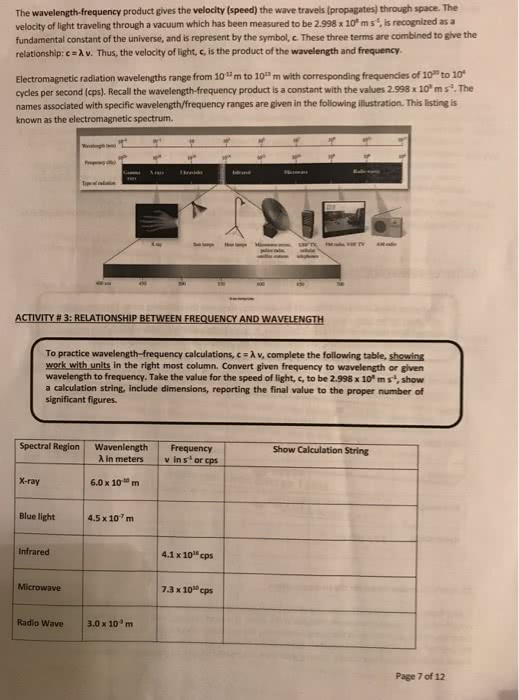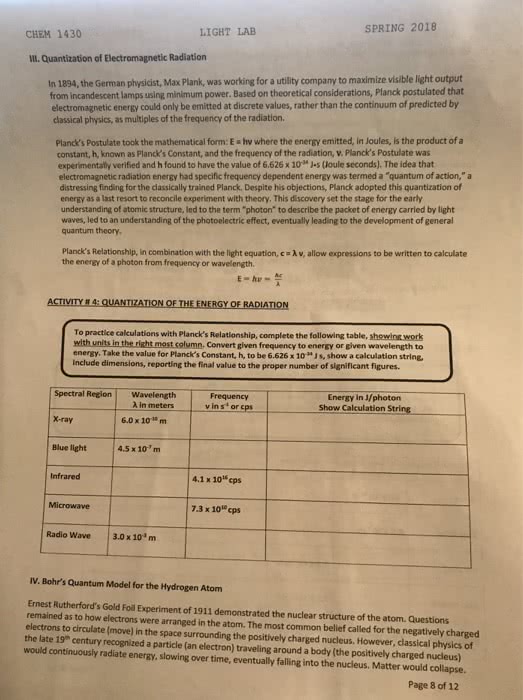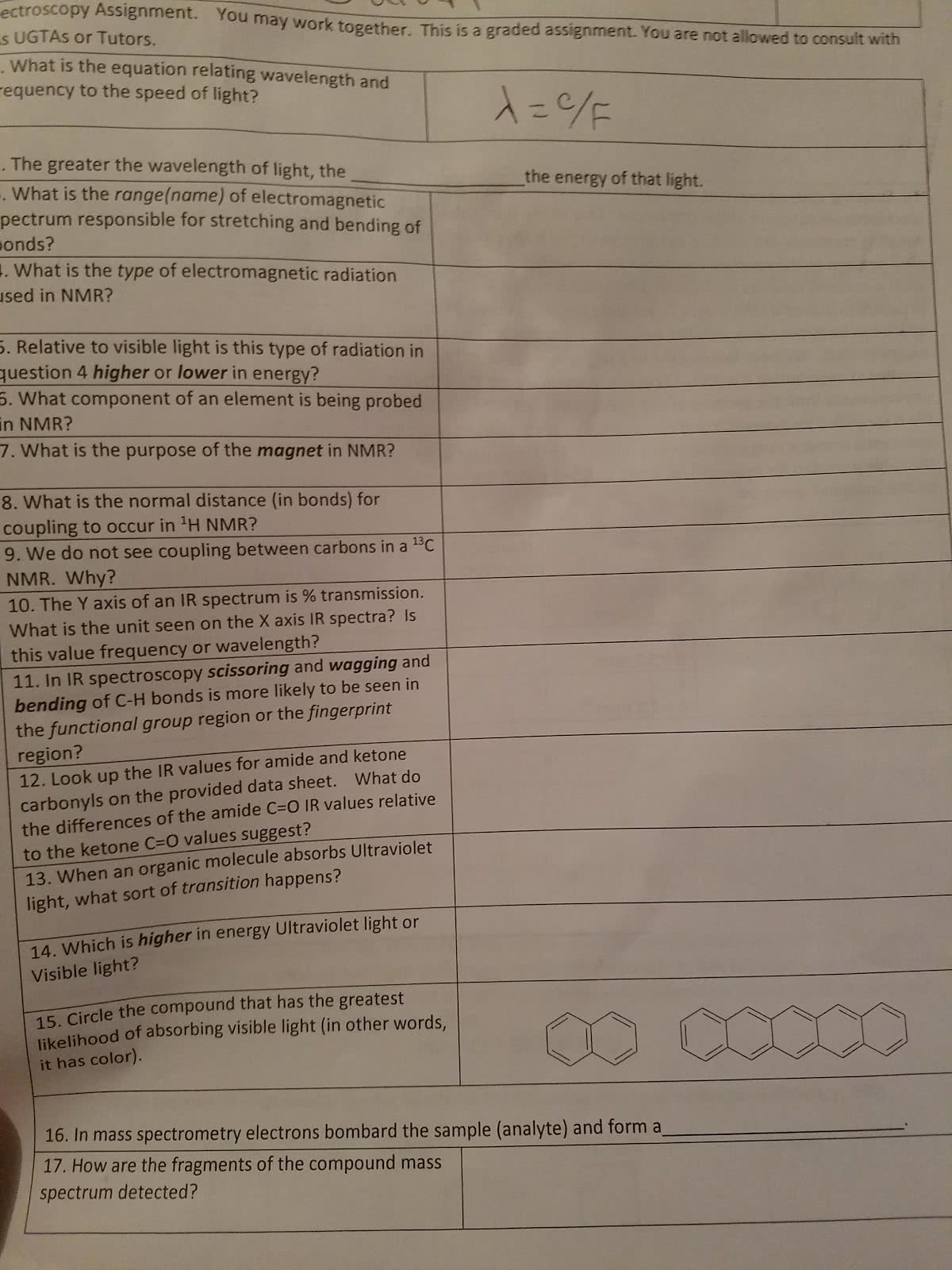01:160:307 Chapter 12: Ch12
56 views11 pages
18 Jul 2016
School
Department
Course
Professor
Document Summary
Electromagnetic radiation causes a transition to a higher state; the energy difference, de, provides information. The human eye has small, medium and large cones, which have color sensitivity as shown; combined, they can capture an infinite number of color nuances. Electromagnetic radiation can be described as a wave having wavelength, , frequency, , and velocity, c. Alternatively, it can be considered as a particle with energy, e. The various types of radiation differ in wavelength, , and frequency, ; the human eye can detect a narrow range of wavelengths and also distinguish between them (at least most of us). Electromagnetic radiation: light and other forms of radiant energy. Wavelength ( ): the distance between consecutive peaks on a wave. Frequency ( ): the number of full cycles of a wave that pass a given point in one second; the unit is hertz, hz; 1 hz = 1 s 1 (read per second ).
Get access
Grade+20% off
$8 USD/m$10 USD/m
Billed $96 USD annually

Homework Help
Study Guides
Textbook Solutions
Class Notes
Textbook Notes
Booster Class
40 Verified Answers
Class+
$8 USD/m
Billed $96 USD annually

Homework Help
Study Guides
Textbook Solutions
Class Notes
Textbook Notes
Booster Class
30 Verified Answers



